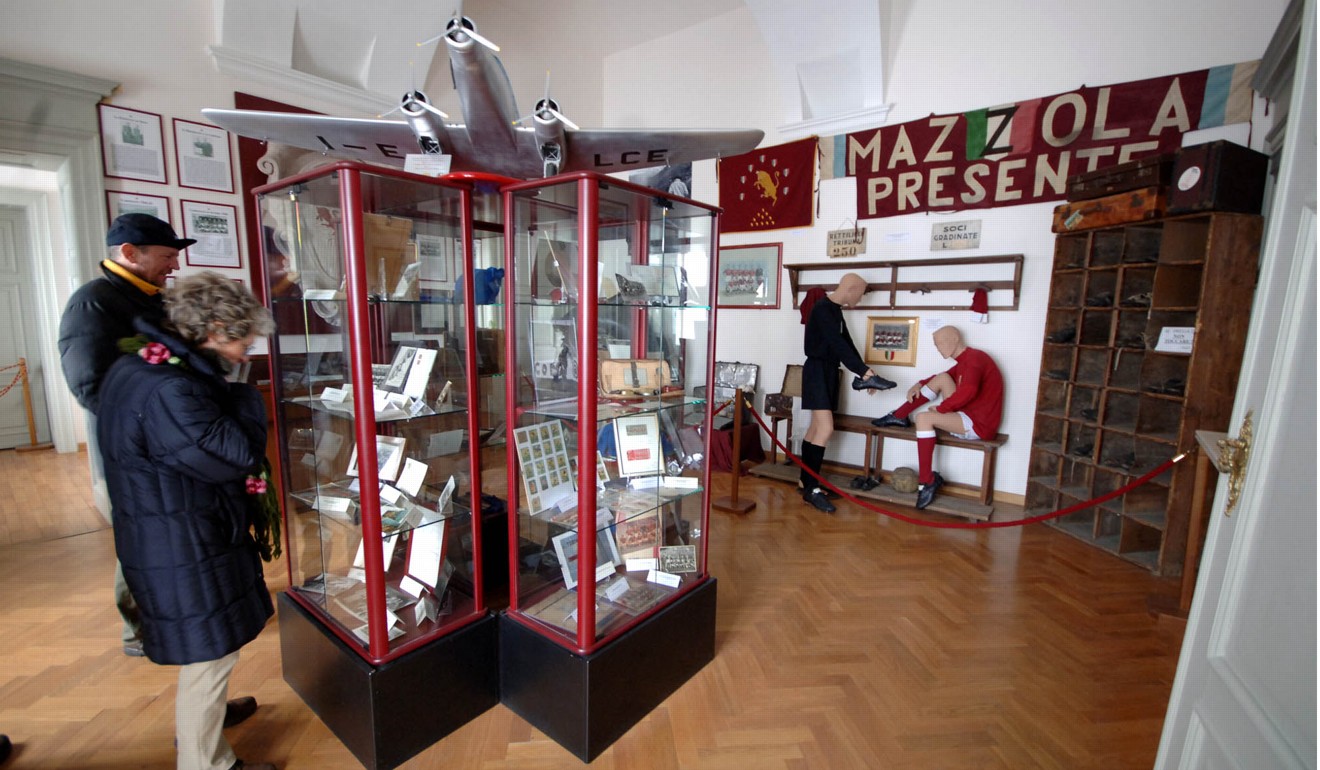
Leicester City tragedy follows Manchester United, Grande Torino and Chapecoense in football club air disasters
- Torino’s Superga disaster in 1948 still felt 70 years on, while Chapecoense was just two years ago
- Premier League side decide to go ahead with Cardiff City game on Saturday
The tragic incident is a reminder that football is only a game. But sadly it is not the first such air disaster to befall football.
The most famous is the Munich Air Disaster, when a plane containing Manchester United’s team, staff and journalists crashed at the German airport on the way back from playing Red Star Belgrade in the European Cup. February 6, 1958, is a date that lives long in the memory in Manchester, Munich, Belgrade and beyond.

The young team were looking for a third league title in a row and had reached their second consecutive European Cup semi-final but the crash on the second attempt to lift off from the icy runway decimated the team.
Of the 44 people on board, 23 lost their lives. Seven players died, including England star Duncan Edwards some 15 days later in hospital.
Manager Matt Busby was read the last rites but recovered to eventually rebuild the side that would become champions of Europe a decade later.
For the survivors, it had a lasting effect. Bobby Charlton, was never the same again.
The sympathy from other clubs and fans around the world is credited in part to United’s global popularity over the years and the club remain England’s most successful and one of the biggest.

Munich was not the first. Italian side Torino were on a plane that crashed into the Basilica of Superga, a church on a hill on the outskirts of Turin, in low visibility on May 4, 1949.
There were no survivors among the 31 on board – 27 passengers and four crew. Many of the 18 players killed were full Italy internationals in a side much fancied for the 1950 World Cup in Brazil.
The Grande Torino side, as they were known for their dominance of Serie A, won the league that season, playing their final fixtures with youth teamers, but it would be 1976 before they won again and they are yet to win since.

Disaster has not been confined to club teams. The Zambia national team were aboard a Zambian Air Force flight to their 1994 World Cup qualifier with Senegal in Dakar on April 27, 1993, when it crashed into the Atlantic Ocean after a refuelling stop in Libreville, Gabon.
There were no survivors among the 25 passengers and five crew.
A handful of overseas-based players were not on the flight, having made other arrangements to get to Dakar or missing the game though injury.
Zambia lost 18 players that day but still pulled together a team for the African Nations Cup held in Tunisia the following March. They reached the final and lost to Nigeria.
While the country is yet to qualify for its first World Cup finals, it went one better in the African Nations Cup and lifted its first and so far only continental crown in 2012, winning it in Libreville.
Chelsea’s vice-chairman Matthew Harding was one of five who died in a helicopter crash – three passengers and two crew – on the way back from an English League Cup game against Bolton Wanderers on October 22, 1996 – an anniversary which the London club and the media marked just days before the fatal crash at Leicester City.
Harding was 42 and did not live to see the success that his 1993 investment in the club brought, beginning with the FA Cup at the end of that 1996-97 season.
Chelsea have gone on to become one of the biggest clubs in the world after being bought by Russian oligarch Roman Abramovich in 2003.
Harding is memorialised with the Matthew Harding Stand at Chelsea’s Stamford Bridge stadium, the redeveloped north stand which opened ahead of the 1997-98 season.

Their plane crashed as it approached the airport in Medellin, killing 71 of the 77 on board.
Three Chapecoense players were among the survivors, although goalkeeper Jakson Follman had a leg amputated as a result of his injuries.
The team were awarded the Copa Sudamericana at Atletico Nacional’s request and they qualified for the 2017 Copa Libertadores as champions, winning their first game with a rebuilt team made of youth and loan players.
Atletico Nacional’s gesture was one of many as the Chapecoense cause became global.
Survivors Neto and Alan Ruschel remain among the current squad, who sit 17th in Brazil’s Serie A.

